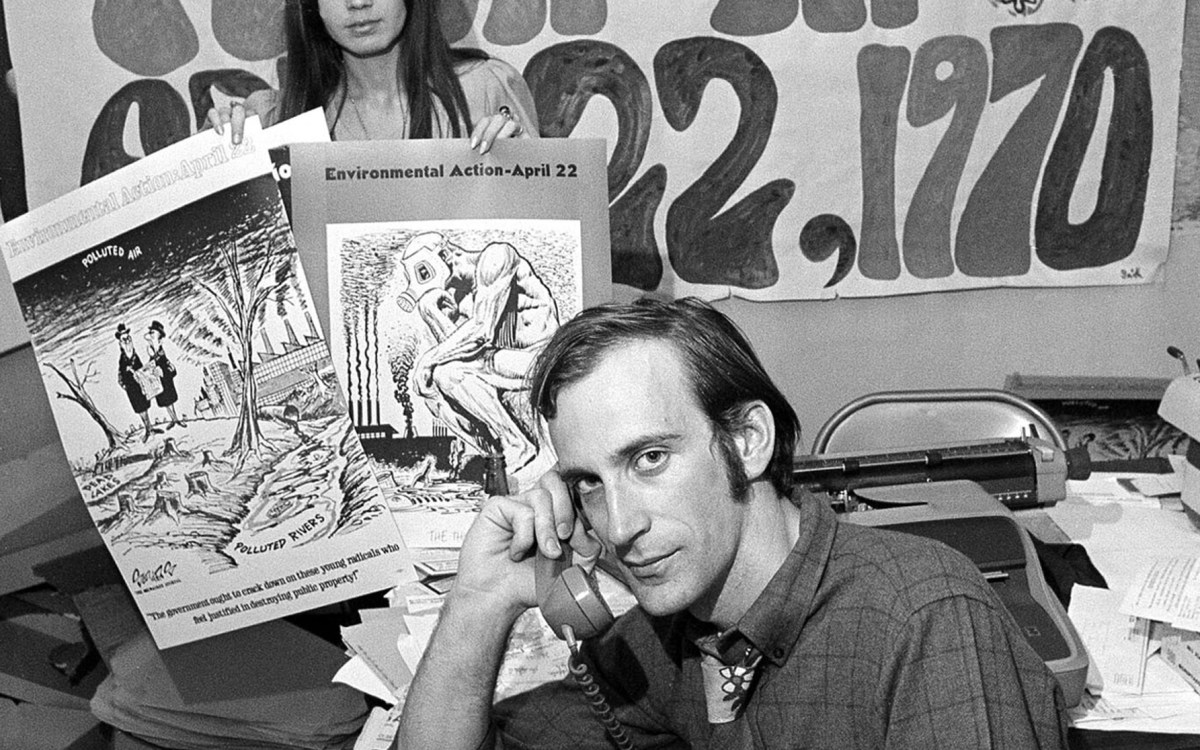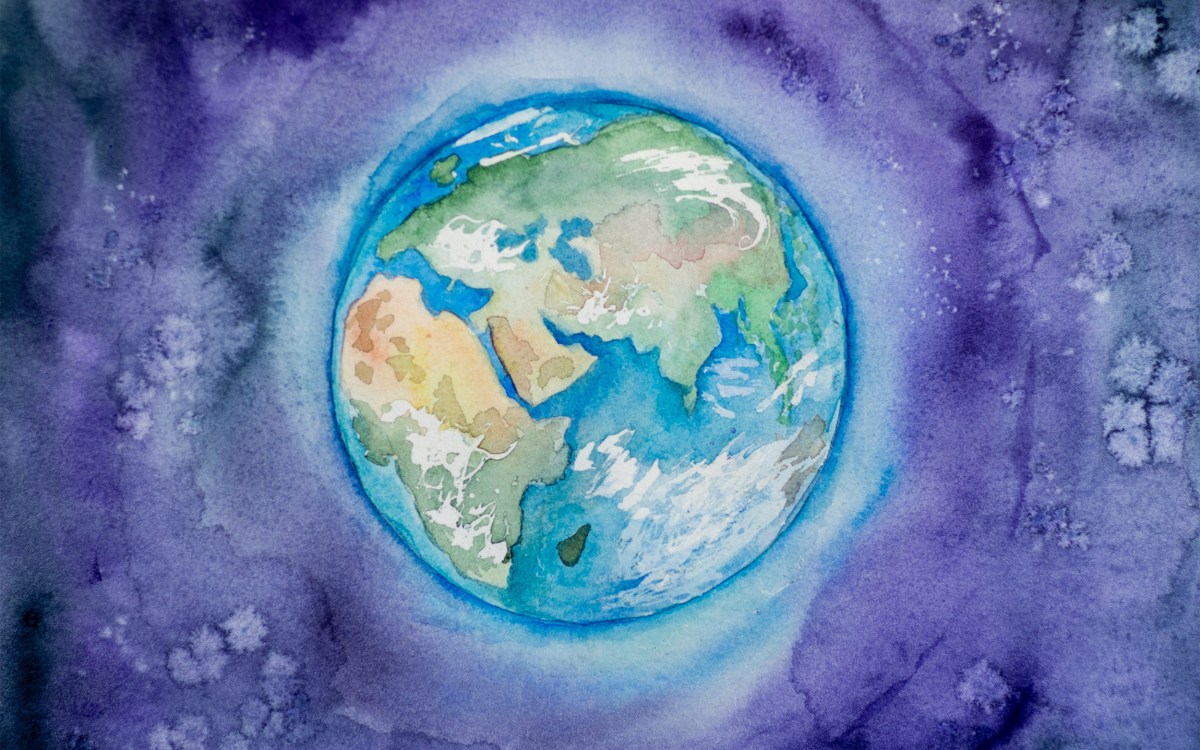Eyes on tomorrow, voices of today
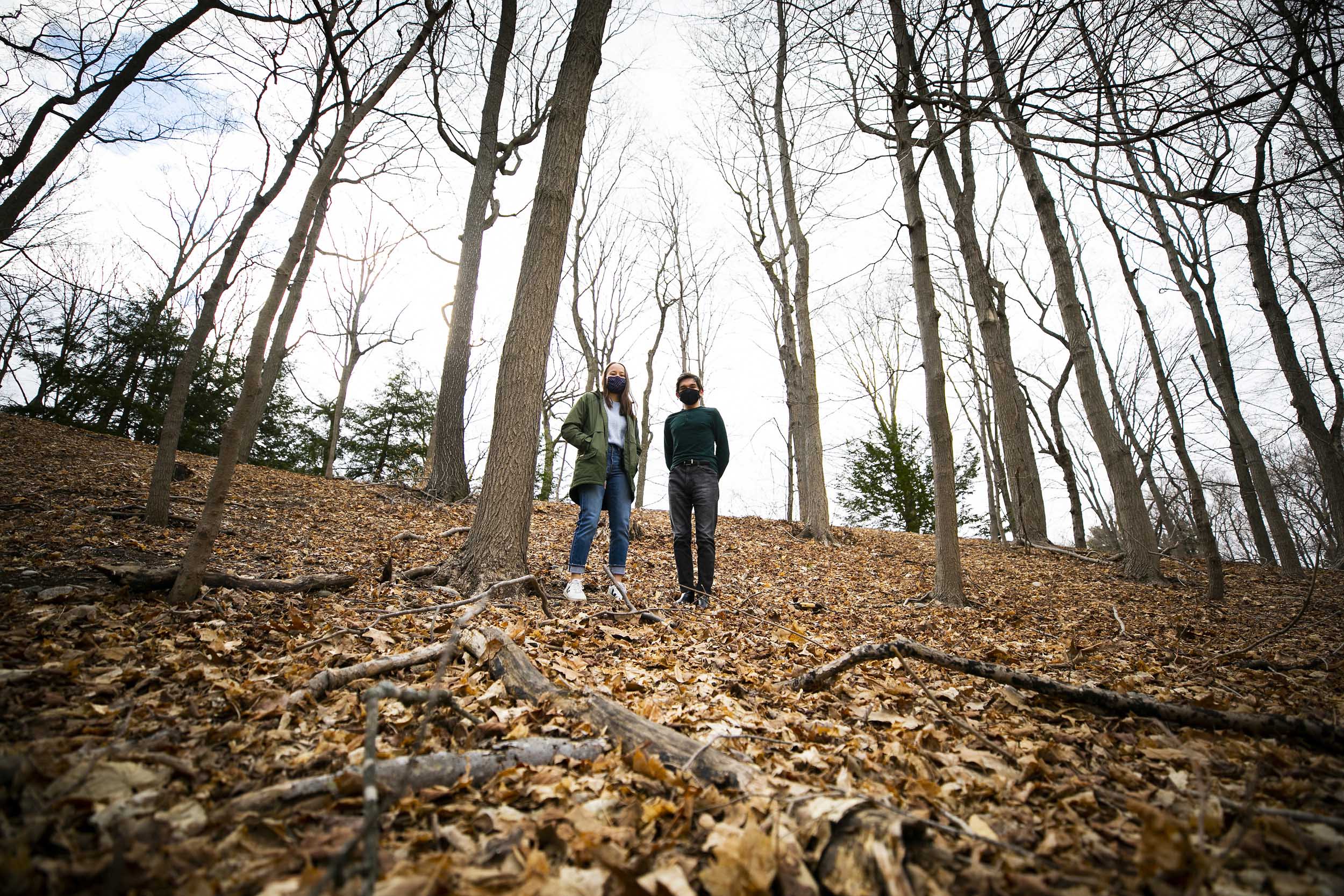
Candice Chen ’22 (left) and Noah Secondo ’22.
Photos by Stephanie Mitchell/Harvard Staff Photographer
Harvard students share thoughts, fears, plans to meet environmental challenges
For many, thinking about the world’s environmental future brings concern, even outright alarm.
There have been, after all, decades of increasingly strident warnings by experts and growing, ever-more-obvious signs of the Earth’s shifting climate. Couple this with a perception that past actions to address the problem have been tantamount to baby steps made by a generation of leaders who are still arguing about what to do, and even whether there really is a problem.
It’s no surprise, then, that the next generation of global environmental leaders are preparing for their chance to begin work on the problem in government, business, public health, engineering, and other fields with a real sense of mission and urgency.
The Gazette spoke to students engaged in environmental action in a variety of ways on campus to get their views of the problem today and thoughts on how their activities and work may help us meet the challenge.
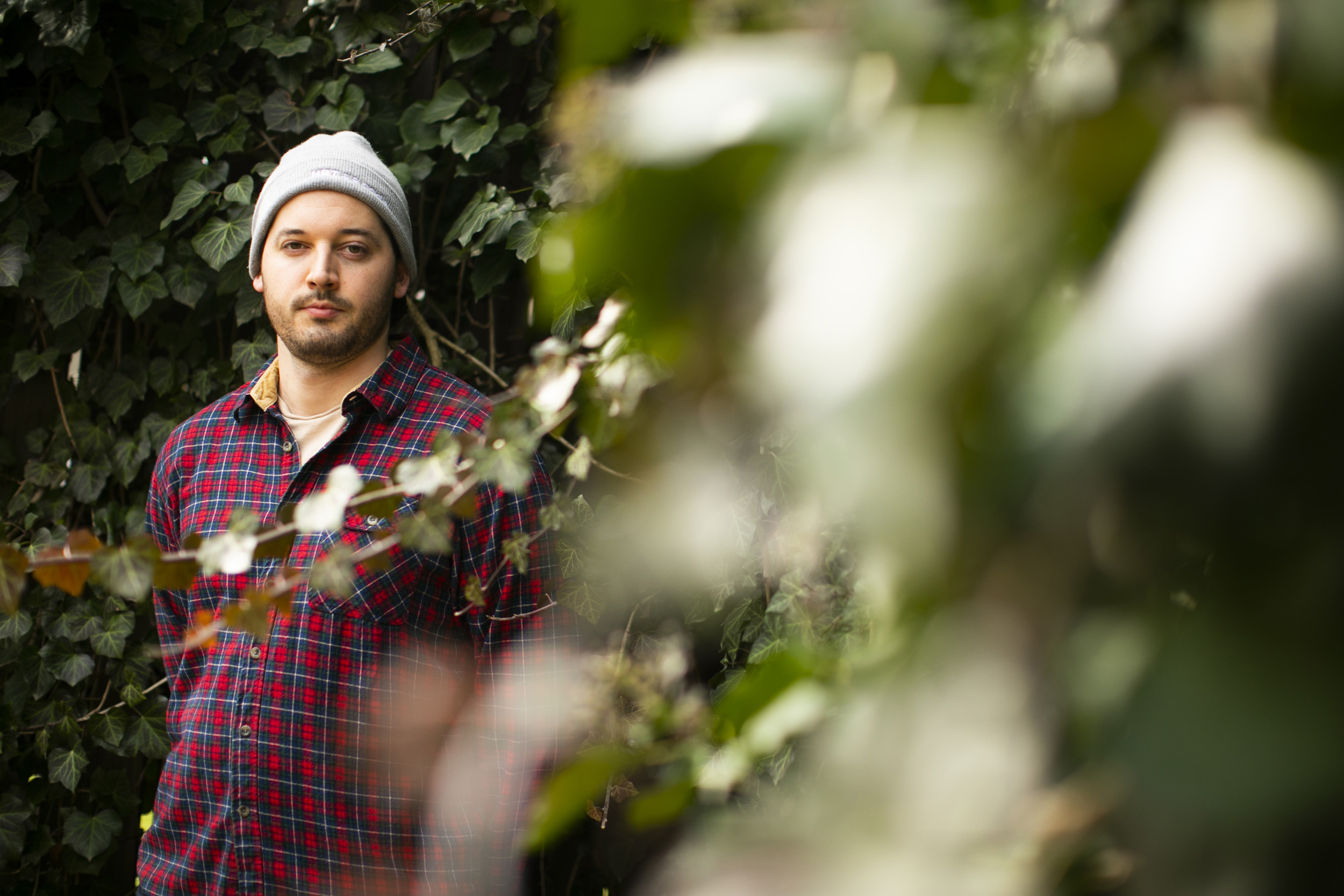
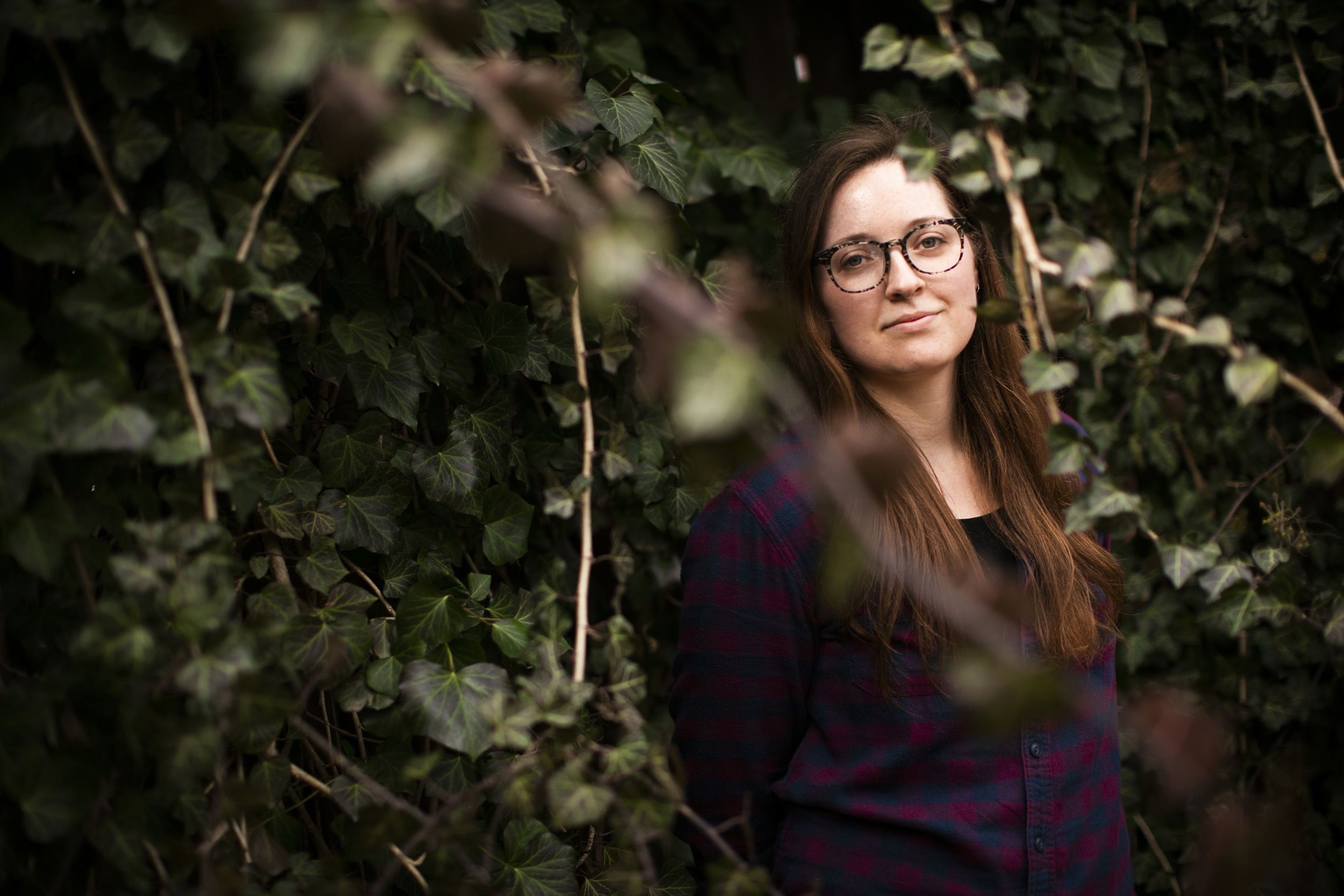
Eric Fell and Eliza Spear
Fell is president and Spear is vice president of Harvard Energy Journal Club. Fell is a graduate student at the Harvard John H. Paulson School of Engineering and Applied Sciences and Spear is a graduate student in the Department of Chemistry and Chemical Biology.
FELL: For the past three centuries, fossil fuels have enabled massive growth of our civilization to where we are today. But it is now time for a new generation of cleaner-energy technologies to fuel the next chapter of humanity’s story. We’re not too late to solve this environmental challenge, but we definitely shouldn’t procrastinate as much as we have been. I don’t worry about if we’ll get it done, it’s the when. Our survival depends on it. At Harvard, I’ve been interested in the energy-storage problem and have been focusing on developing a grid-scale solution utilizing flow batteries based on organic molecules in the lab of Mike Aziz. We’ll need significant deployment of batteries to enable massive penetration of renewables into the electrical grid.
SPEAR: Processes leading to greenhouse-gas emissions are so deeply entrenched in our way of life that change continues to be incredibly slow. We need to be making dramatic structural changes, and we should all be very worried about that. In the Harvard Energy Journal Club, our focus is energy, so we strive to learn as much as we can about the diverse options for clean-energy generation in various sectors. A really important aspect of that is understanding how much of an impact those technologies, like solar, hydro, and wind, can really have on reducing greenhouse-gas emissions. It’s not always as much as you’d like to believe, and there are still a lot of technical and policy challenges to overcome.
I can’t imagine working on anything else, but the question of what I’ll be working on specifically is on my mind a lot. The photovoltaics field is at a really exciting point where a new technology is just starting to break out onto the market, so there are a lot of opportunities for optimization in terms of performance, safety, and environmental impact. That’s what I’m working on now [in Roy Gordon’s lab] and I’m really enjoying it. I’ll definitely be in the renewable-energy technology realm. The specifics will depend on where I see the greatest opportunity to make an impact.
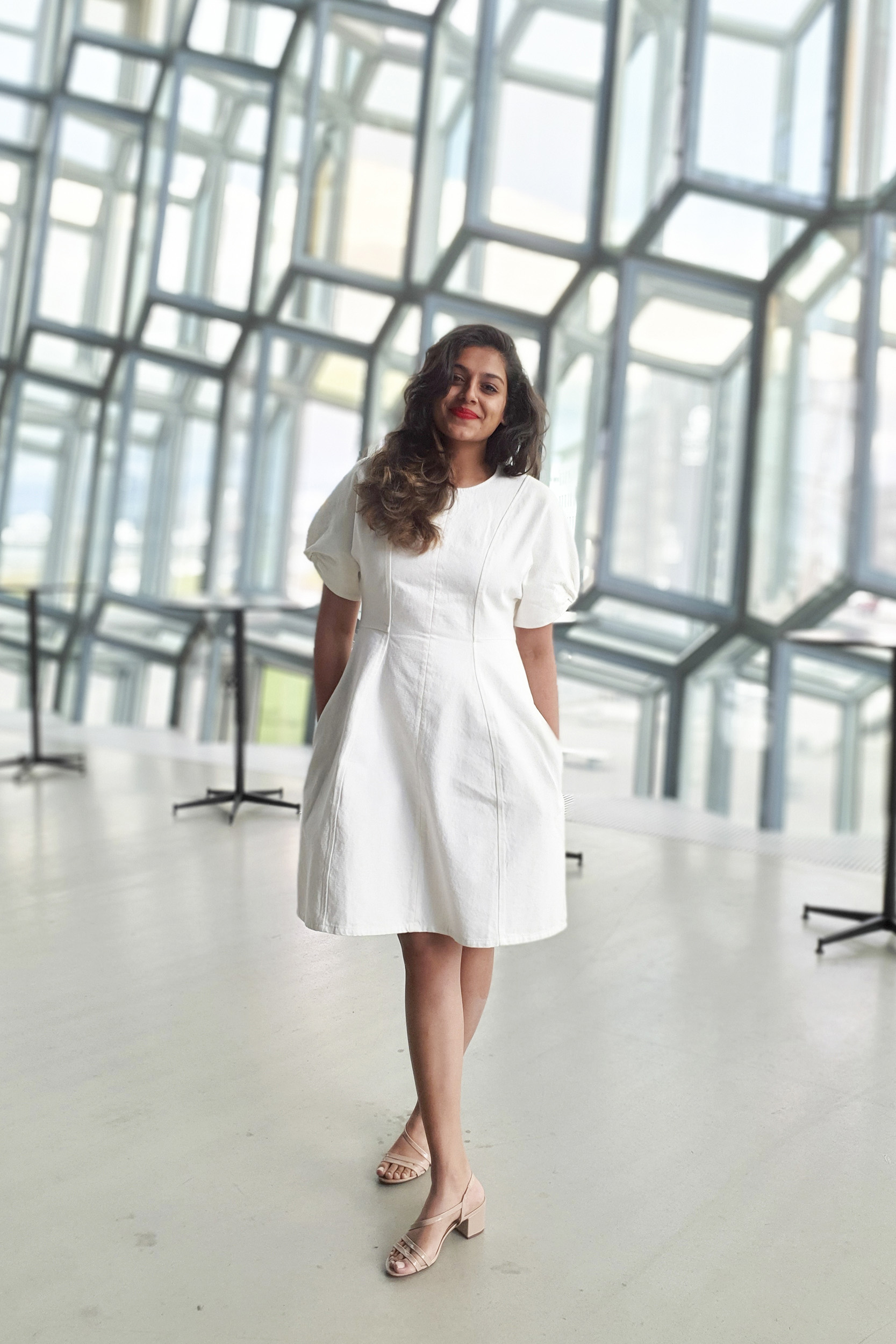
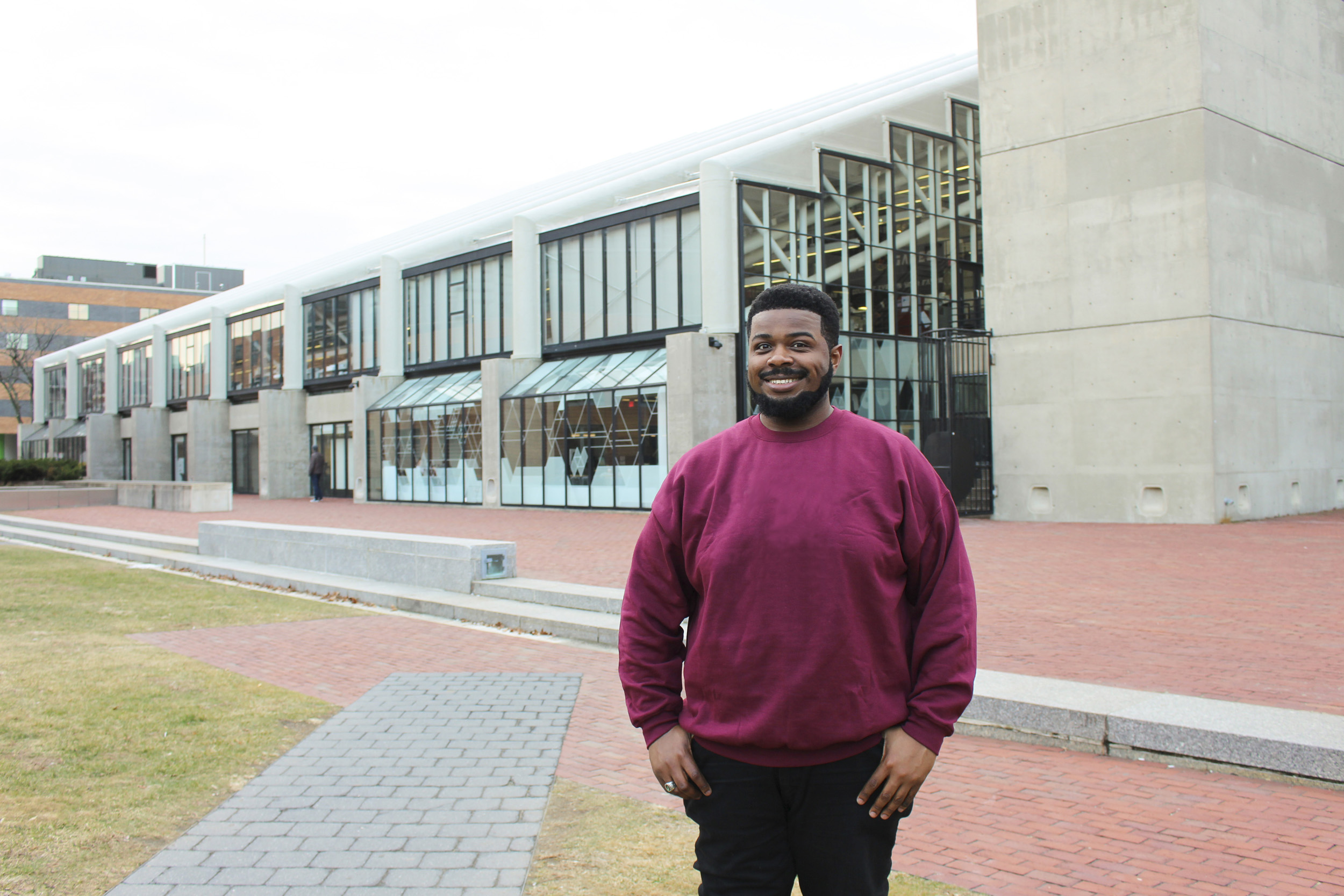
Photo (left) courtesy of Kritika Kharbanda; photo by Tiera Satchebell.
Kritika Kharbanda ’23 and Laier-Rayshon Smith ’21
Kharbanda is with the Harvard Student Climate Change Conference, Harvard Circular Economy Symposium. Smith is a member of Climate Leaders Program for Professional Students at Harvard. Both are students at Harvard Graduate School of Design.
KHARBANDA: I come from a country where the most pressing issues are, and will be for a long time, poverty, food shortage, and unemployment born out of corruption, illiteracy, and rapid gentrification. India was the seventh-most-affected country by climate change in 2019. With two-thirds of the population living in rural areas with no access to electricity, even the notion of climate change is unimaginable.
I strongly believe that the answer lies in the conjugality of research and industry. In my field, achieving circularity in the building material processes is the burning concern. The building industry currently contributes to 40 percent of global carbon dioxide emissions, of which 38 percent is contributed by the embedded or embodied energy used for the manufacturing of materials. A part of the Harvard i-lab, I am a co-founder of Cardinal LCA, an early stage life-cycle assessment tool that helps architects and designers visualize this embedded energy in building materials, saving up to 46 percent of the energy from the current workflow. This venture has a strong foundation as a research project for a seminar class I took at the GSD in fall 2020, instructed by Jonathan Grinham. I am currently working as a sustainability engineer at Henning Larsen architects in Copenhagen while on a leave of absence from GSD. In the decades to come, I aspire to continue working on the embodied carbon aspect of the building industry. Devising an avant garde strategy to record the embedded carbon is the key. In the end, whose carbon is it, anyway?
SMITH: The biggest challenges are areas where the threat of climate change intersects with environmental justice. It is important that we ensure that climate-change mitigation and adaptation strategies are equitable, whether it is sea-level rise or the increase in urban heat islands. We should seek to address the threats faced by the most vulnerable communities — the communities least able to resolve the threat themselves. These often tend to be low-income communities and communities of color that for decades have been burdened with bearing the brunt of environmental health hazards.
During my time at Harvard, I have come to understand how urban planning and design can seek to address this challenge. Planners and designers can develop strategies to prioritize communities that are facing a significant climate-change risk, but because of other structural injustices may not be able to access the resources to mitigate the risk. I also learned about climate gentrification: a phenomenon in which people in wealthier communities move to areas with lower risks of climate-change threats that are/were previously lower-income communities. I expect to work on many of these issues, as many are connected and are threats to communities across the country. From disinvestment and economic extraction to the struggle to find quality affordable housing, these injustices allow for significant disparities in life outcomes and dealing with risk.

Lucy Shaw ’21
Shaw is co-president of the HBS Energy and Environment Club. She is a joint-degree student at Harvard Business School and Harvard Kennedy School.
SHAW: I want to see a world where climate change is averted and the environment preserved, without it being at the expense of the development and prosperity of lower-income countries. We have, or are on the cusp of having, many of the financial and technological tools we need to reduce emissions and environmental damage from a wide array of industries, such as agriculture, energy, and transport. The challenge I am most worried about is how we balance economic growth and opportunity with reducing humanity’s environmental impact and share this burden equitably across countries.
I came to Harvard as a joint degree student at the Kennedy School and Business School to be able to see this challenge from two different angles. In my policy-oriented classes, we learned about the opportunities and challenges of global coordination among national governments — the difficulty in enforcing climate agreements, and in allocating and agreeing on who bears the responsibility and the costs of change, but also the huge potential that an international framework with nationally binding laws on environmental protection and carbon-emission reduction could have on changing the behavior of people and businesses. In my business-oriented classes, we learned about the power of business to create change, if there is a driven leadership. We also learned that people and businesses respond to incentives, and the importance of reducing cost of technologies or increasing the cost of not switching to more sustainable technologies — for example, through a tax. After graduate school, I plan to join a leading private equity investor in their growing infrastructure team, which will equip me with tools to understand what makes a good investment in infrastructure and what are the opportunities for reducing the environmental impact of infrastructure while enhancing its value. I hope to one day be involved in shaping environmental and development policy, whether it is on a national or international level.
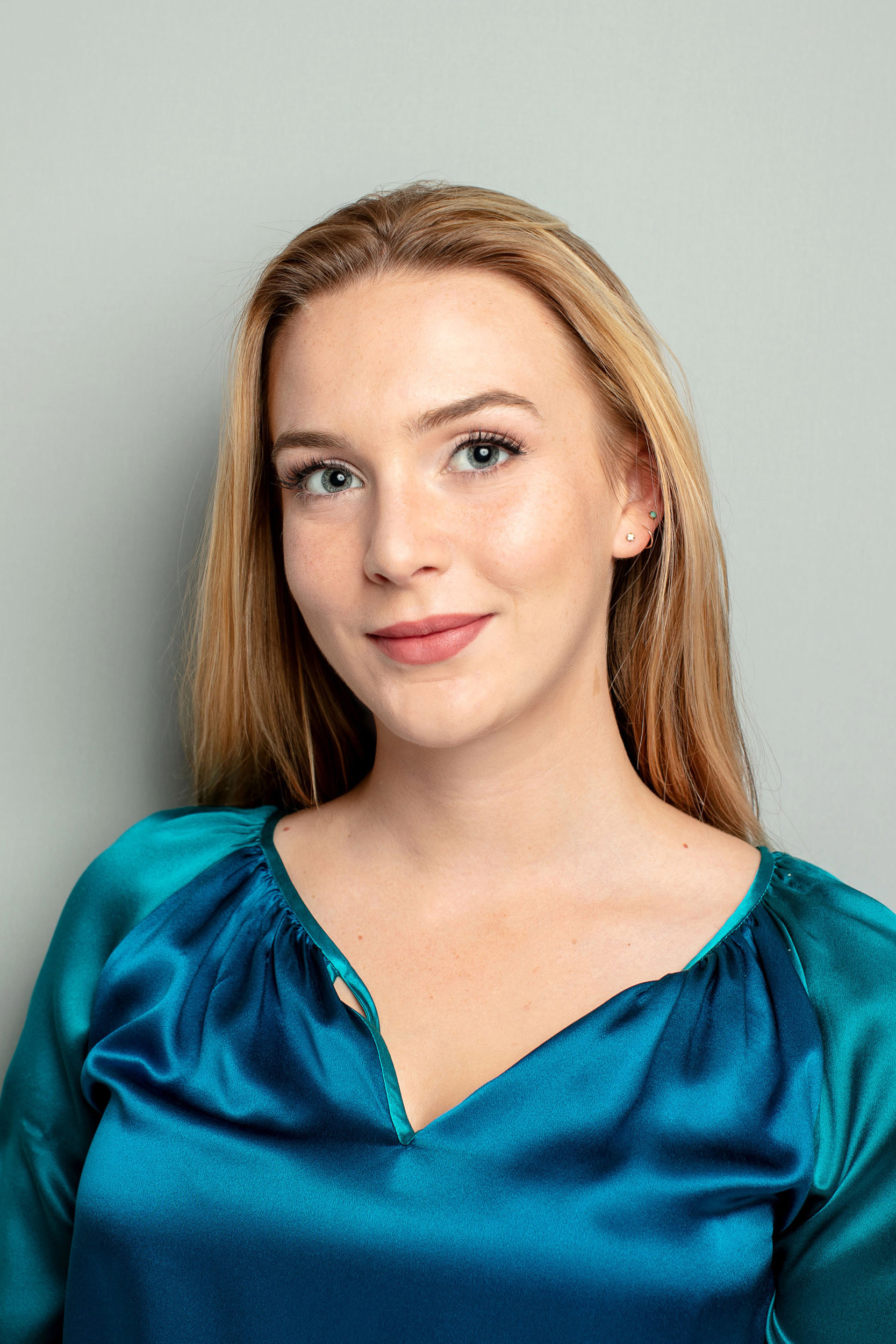
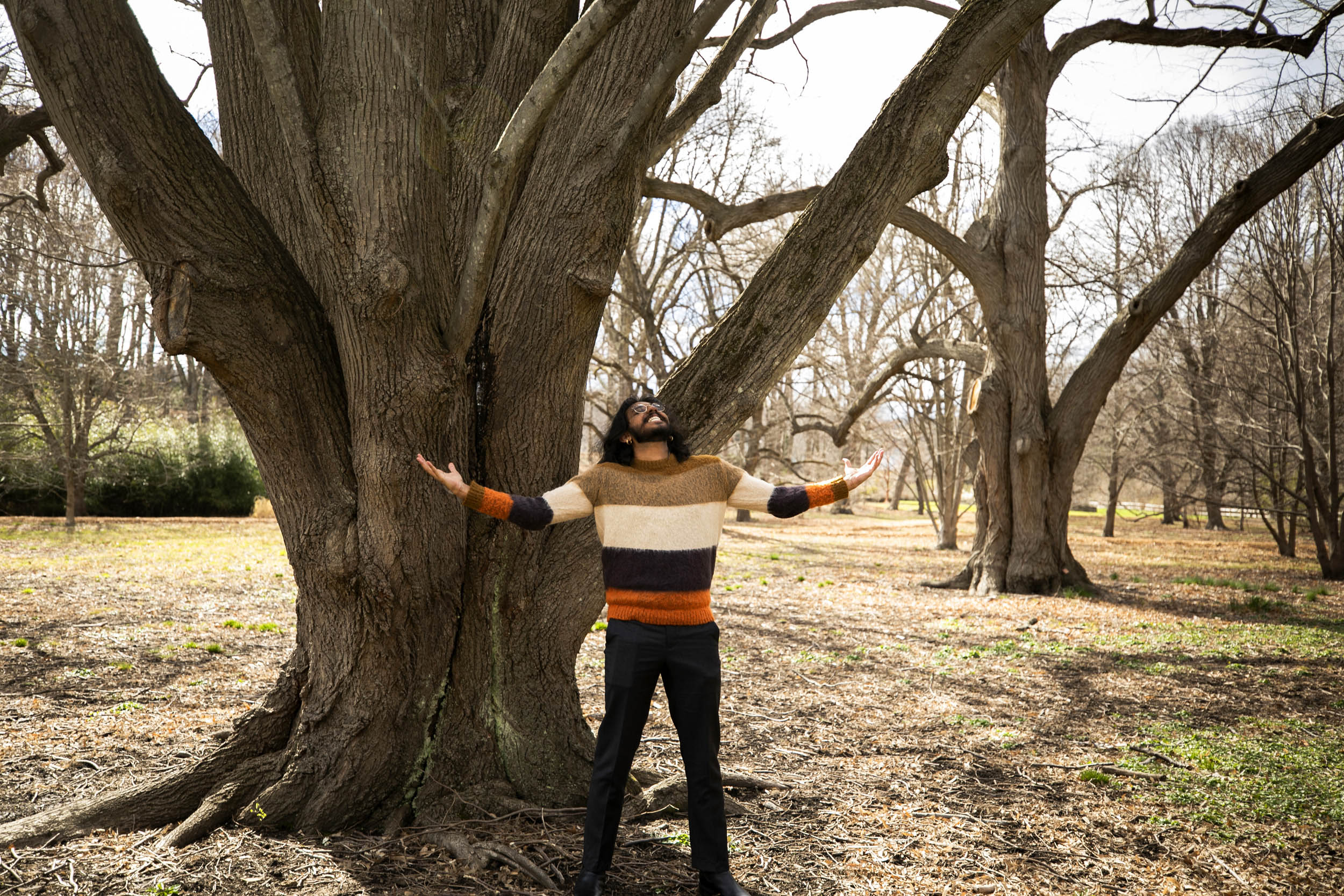
Photo (left) by Tabitha Soren.
Quinn Lewis ’23 and Suhaas Bhat ’24
Both are with the Student Climate Change Conference, Harvard College.
LEWIS: When I was a kid, I imagined being an adult as a future with a stable house, a fun job, and happy kids. That future didn’t include wildfires that obscured the sun for months, global water shortages, or billionaires escaping to terrariums on Mars. The threats are so great and so assured by inaction that it’s very hard for me to justify doing anything else with my time and attention because very little will matter if there’s 1 billion climate refugees and significant portions of the continental United States become uninhabitable for human life.
For whatever reason, I still feel a great deal of hope around giving it a shot. I can’t imagine not working to mitigate the climate crisis. Media and journalism will play a huge role in raising awareness, as they generate public pressure that can sway those in power. Another route for change is to cut directly to those in power and try to convince them of the urgency of the situation. Given that I am 22 years old, it is much easier to raise public awareness or work in media and journalism than it is to sit down with some of the most powerful people on the planet, who tend to be rather busy. At school, I’m on a team that runs the University-wide Student Climate Change Conference at Harvard, which is a platform for speakers from diverse backgrounds to discuss the climate crisis and ways students and educators can take immediate and effective action. Also, I write about and research challenges and solutions to the climate crisis through the lenses of geopolitics and the global economy, both as a student at the College and as a case writer at the Harvard Business School. Outside of Harvard, I have worked in investigative journalism and at Crooked Media, as well as on political campaigns to indirectly and directly drive urgency around the climate crisis.
BHAT: The failure to act on climate change in the last few decades, despite mountains of scientific evidence, is a consequence of political and institutional cowardice. Fossil fuel companies have obfuscated, misinformed, and lobbied for decades, and governments have failed to act in the best interests of their citizens. Of course, the fight against climate change is complex and multidimensional, requiring scientific, technical, and entrepreneurial expertise, but it will ultimately require systemic change to allow these talents to shine.
At Harvard, my work on climate has been focused on running the Harvard Student Climate Conference, as well as organizing for Fossil Fuel Divest Harvard. My hope for the Climate Conference is to provide students access to speakers who have dedicated their careers to all aspects of the fight against climate change, so that students interested in working on climate have more direction and inspiration for what to do with their careers. We’ve featured Congresswoman Ayanna Pressley, members of the Sunrise Movement, and the CEO of Impossible Foods as some examples of inspiring and impactful people who are working against climate change today.
I organize for FFDH because I believe that serious institutional change is necessary for solving the climate crisis and also because of a sort of patriotism I have for Harvard. I deeply respect and care for this institution, and genuinely believe it is an incredible force for good in the world. At the same time, I believe Harvard has a moral duty to stand against the corporations whose misdeeds and falsification of science have enabled the climate crisis.
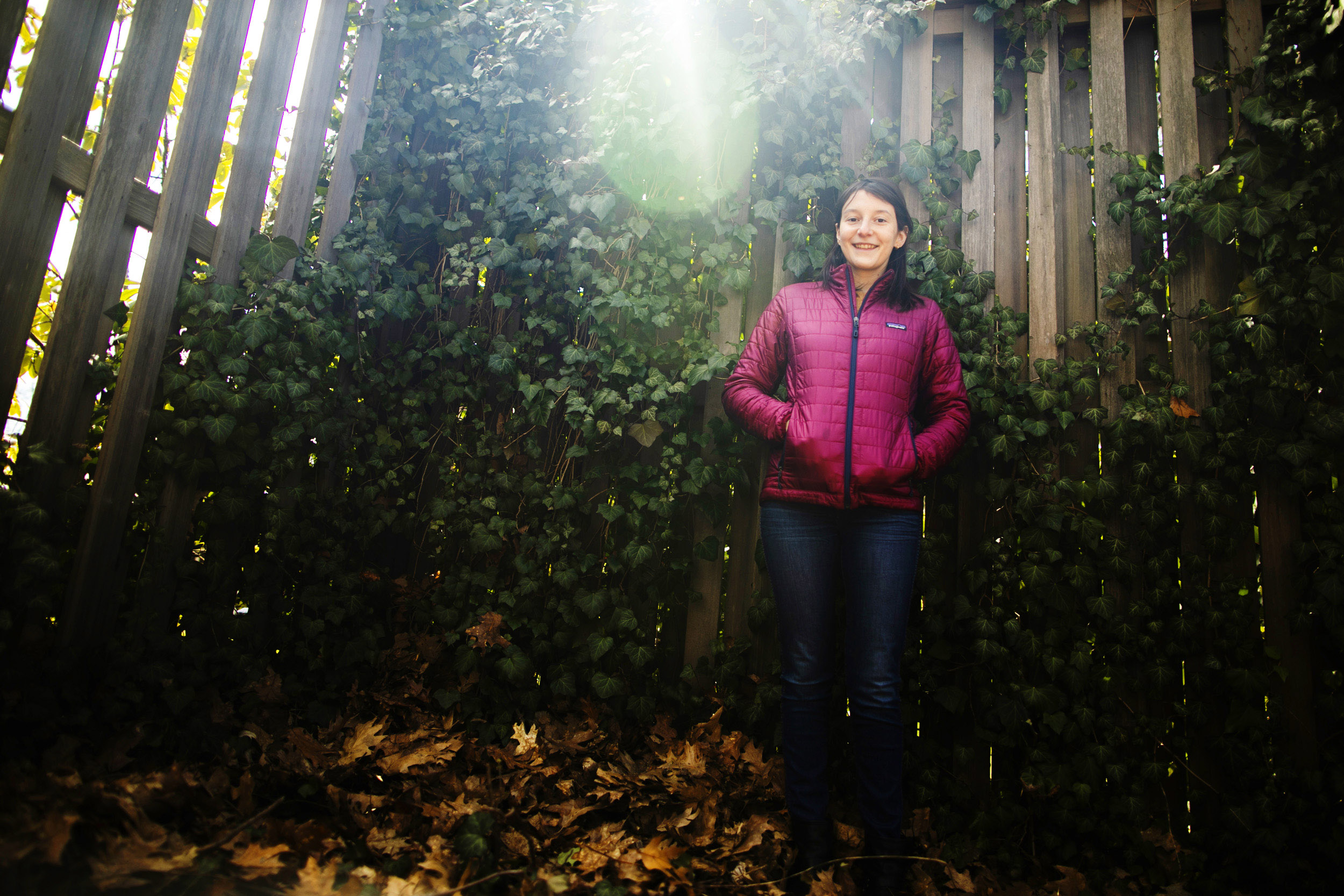
Libby Dimenstein ’22
Dimenstein is co-president of Harvard Law School Environmental Law Society.
DIMENSTEIN: Climate change is the one truly existential threat that my generation has had to face. What’s most scary is that we know it’s happening. We know how bad it will be; we know people are already dying from it; and we still have done so little relative to the magnitude of the problem. I also worry that people don’t see climate change as an “everyone problem,” and more as a problem for people who have the time and money to worry about it, when in reality it will harm people who are already disadvantaged the most.
I want to recognize Professor Wendy Jacobs, who recently passed away. Wendy founded HLS’s fantastic Environmental Law and Policy Clinic, and she also created an interdisciplinary class called the Climate Solutions Living Lab. In the lab, groups of students drawn from throughout the University would conduct real-world projects to reduce greenhouse-gas emissions. The class was hard, because actually reducing greenhouse gases is hard, but it taught us about the work that needs to be done. This summer I’m interning with the Environmental Defense Fund’s U.S. Clean Air Team, and I anticipate a lot of my work will revolve around the climate. After graduating, I’m hoping to do environmental litigation, either with a governmental division or a nonprofit, but I also have an interest in policy work: Impact litigation is fascinating and important, but what we need most is sweeping policy change.
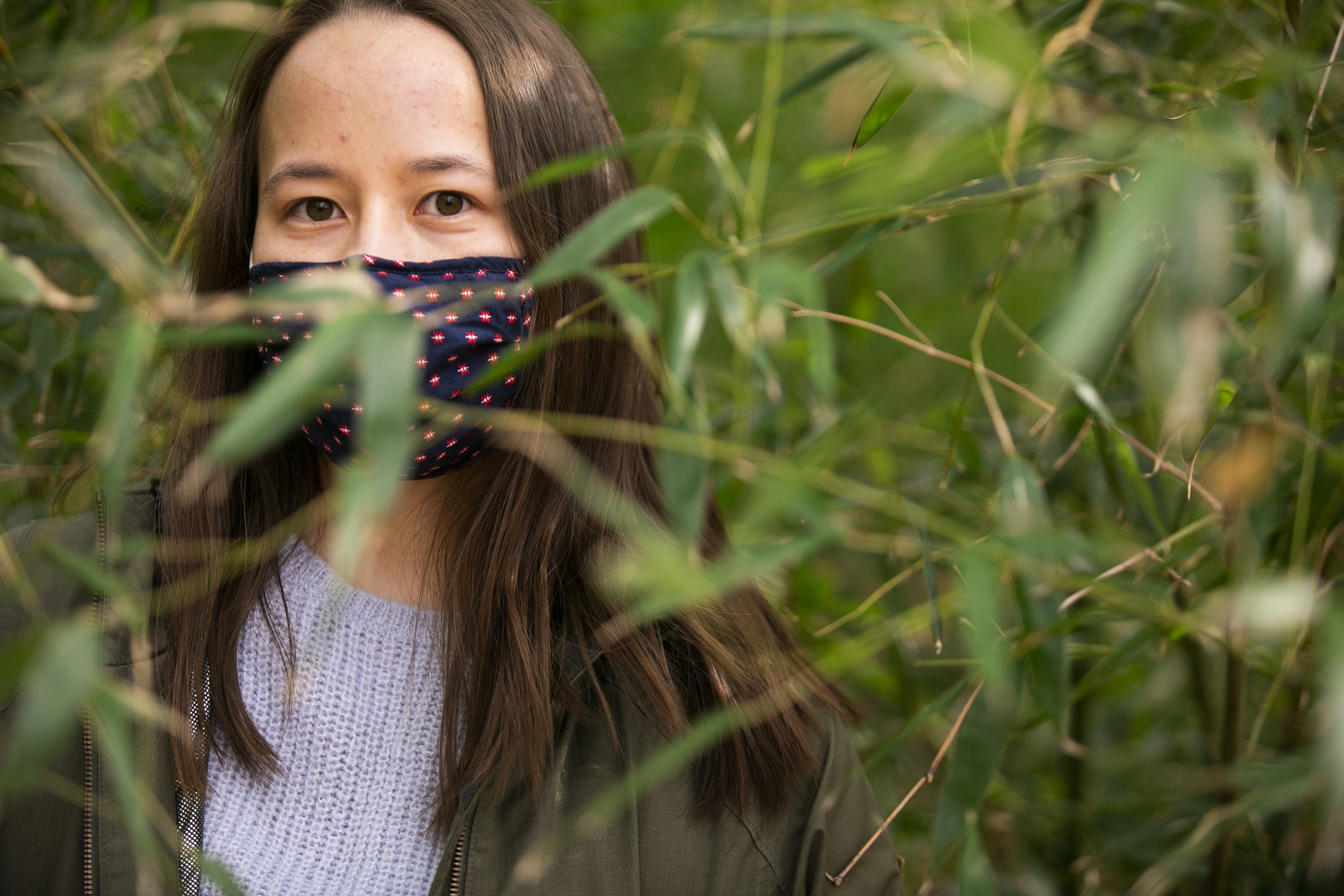
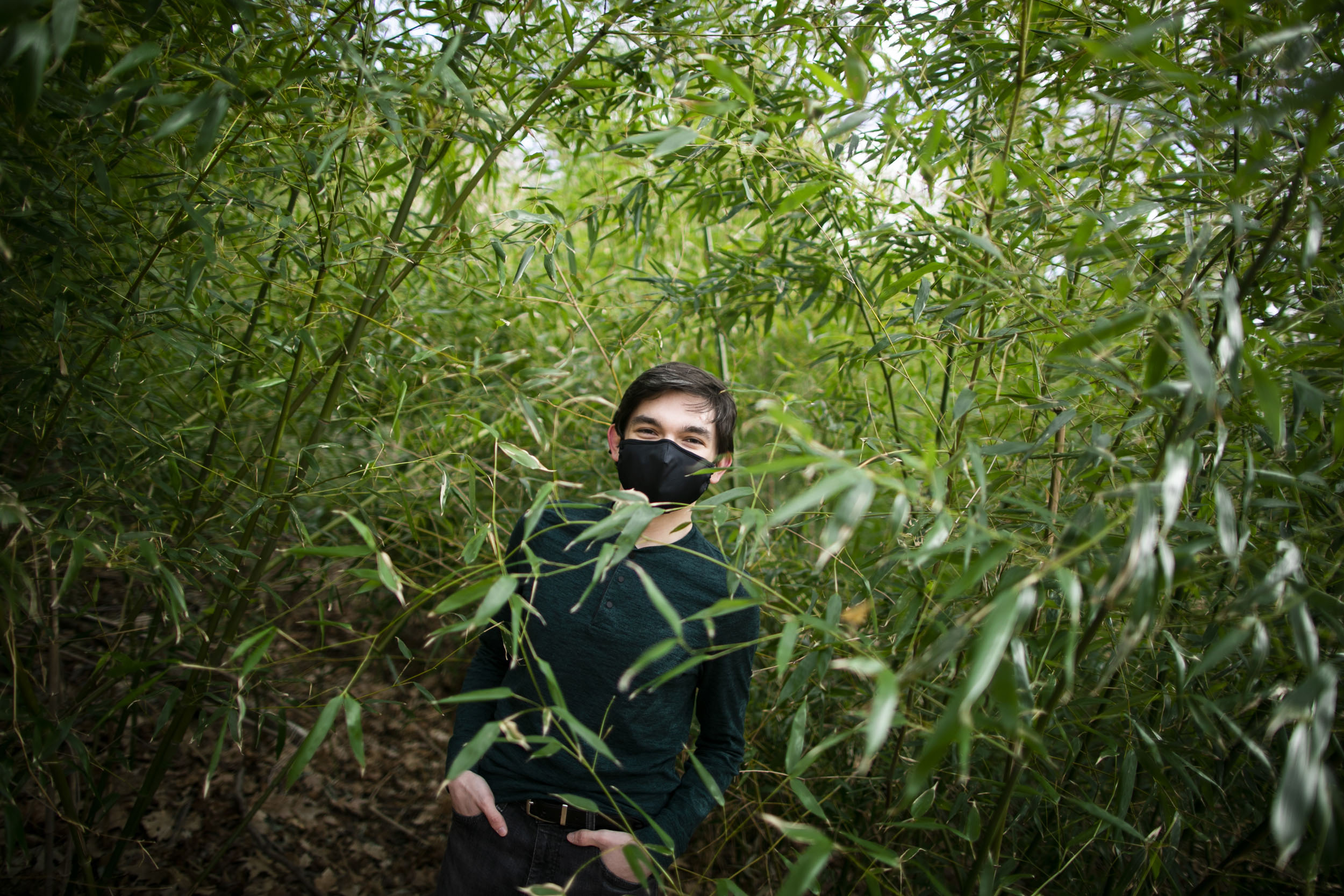
Candice Chen ’22 and Noah Secondo ’22
Chen and Secondo are co-directors of the Harvard Environmental Action Committee. Both attend Harvard College.
SECONDO: The environment is fundamental to rural Americans’ identity, but they do not believe — as much as urban Americans — that the government can solve environmental problems. Without the whole country mobilized and enthusiastic, from New Hampshire to Nebraska, we will fail to confront the climate crisis. I have no doubt that we can solve this problem. To rebuild trust between the U.S. government and rural communities, federal departments and agencies need to speak with rural stakeholders, partner with state and local leaders, and foreground rural voices. Through the Harvard College Democrats and the Environmental Action Committee, I have contributed to local advocacy efforts and creative projects, including an environmental art publication.
I hope to work in government to keep the policy development and implementation processes receptive to rural perspectives, including in the environmental arena. At every level of government, if we work with each other in good faith, we will tackle the climate crisis and be better for it.
CHEN: I’m passionate about promoting more sustainable, plant-based diets. As individual consumers, we have very little control over the actions of the largest emitters, massive corporations, but we can all collectively make dietary decisions that can avoid a lot of environmental degradation. Our food system is currently very wasteful, and our overreliance on animal agriculture devastates natural ecosystems, produces lots of potent greenhouse gases, and creates many human health hazards from poor animal-waste disposal. I feel like the climate conversation is often focused around the clean energy transition, and while it is certainly the largest component of how we can avoid the worst effects of global warming, the dietary conversation is too often overlooked. A more sustainable future also requires us to rethink agriculture, and especially what types of agriculture our government subsidizes. In the coming years, I hope that more will consider the outsized environmental impact of animal agriculture and will consider making more plant-based food swaps.
To raise awareness of the environmental benefits of adopting a more plant-based diet, I’ve been involved with running a campaign through the Environmental Action Committee called Veguary. Veguary encourages participants to try going vegetarian or vegan for the month of February, and participants receive estimates for how much their carbon/water/land use footprints have changed based on their pledged dietary changes for the month.
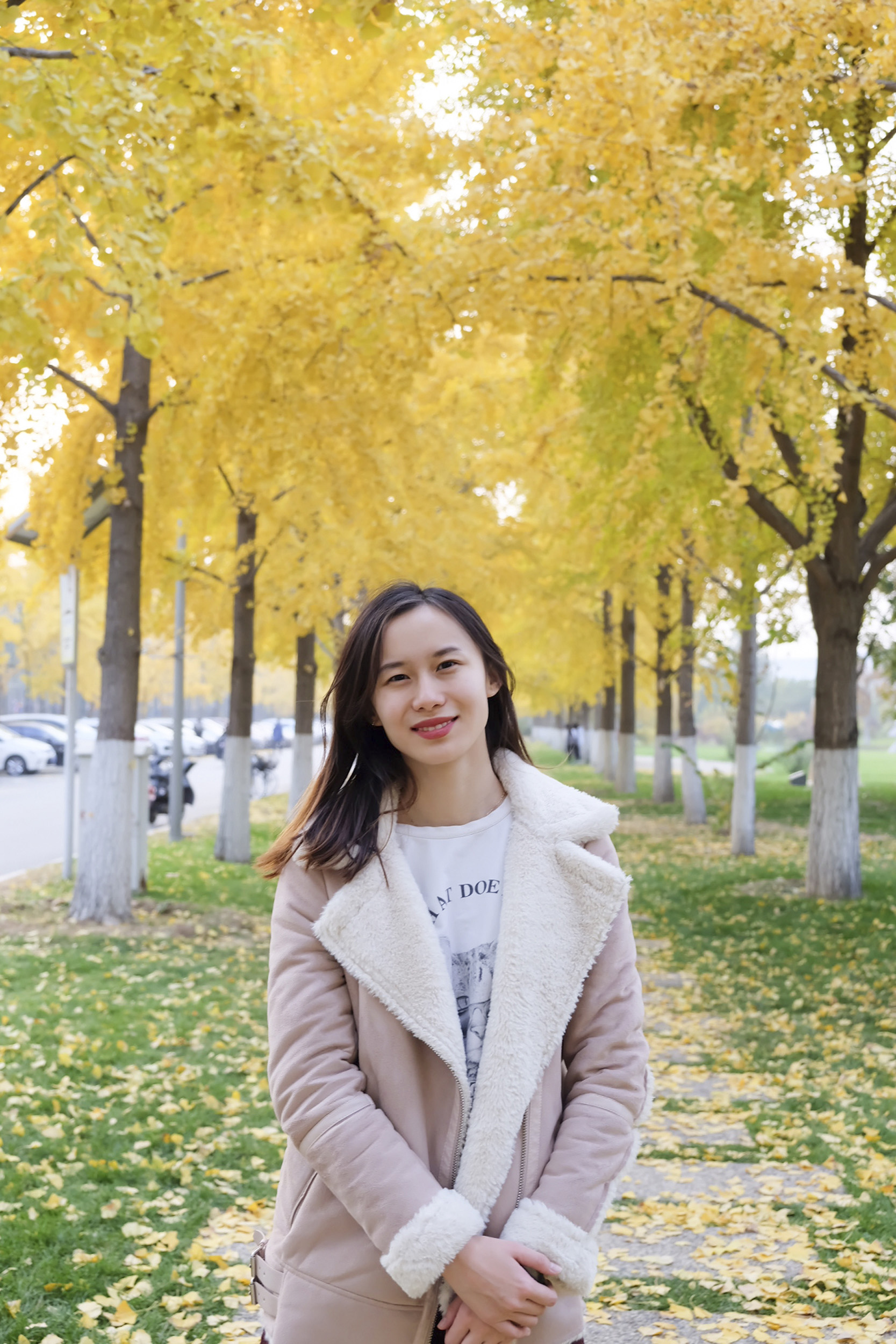
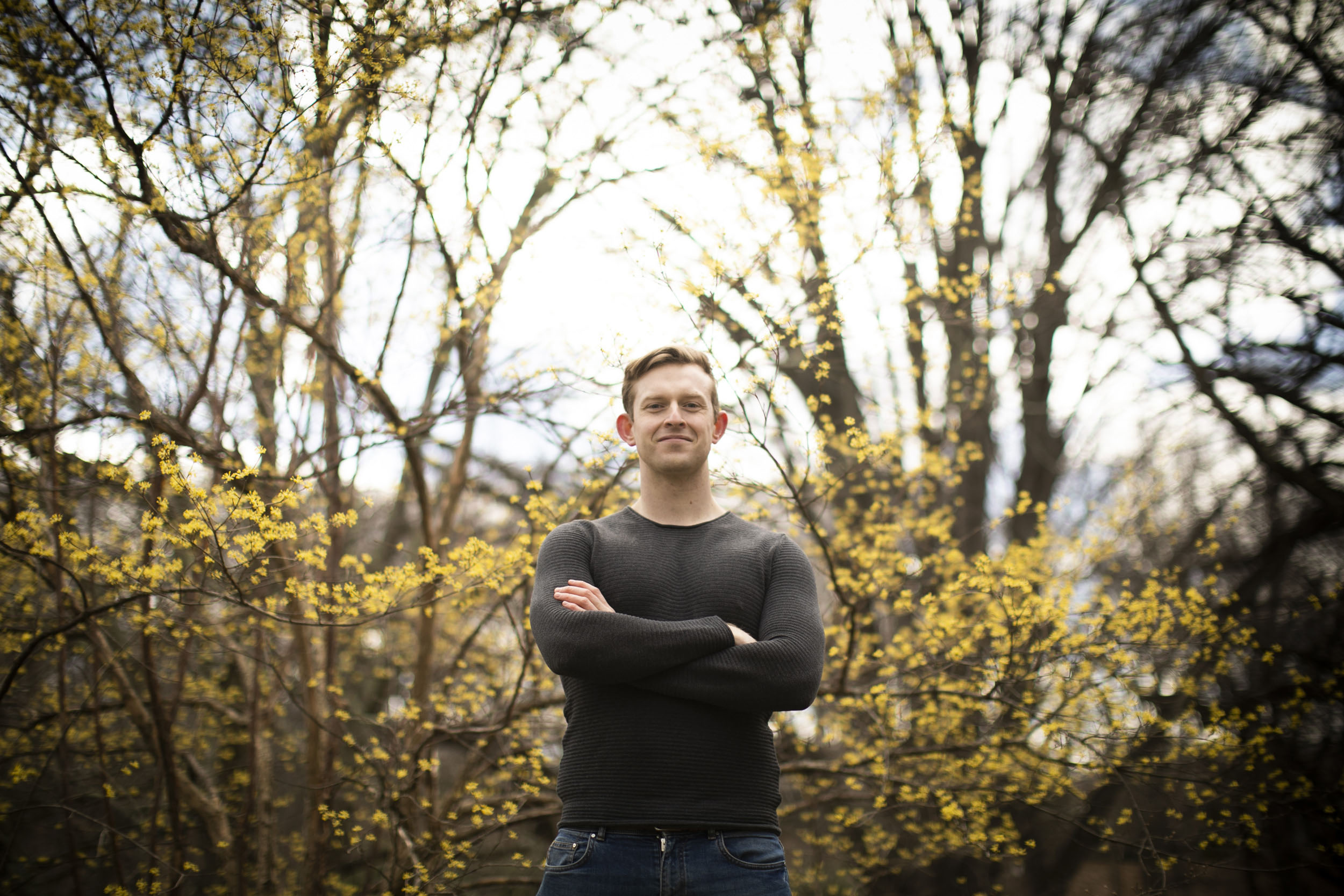
Photo (left) courtesy of Cristina Su Liu.
Cristina Su Liu ’22 and James Healy ’21
Liu is with Harvard Climate Leaders Program for Professional Students. Healy is with the Harvard Student Climate Change Conference. Both are students at Harvard T.H. Chan School of Public Health.
HEALY: As a public health student I see so many environmental challenges, be it the 90 percent of the world who breathe unhealthy air, or the disproportionate effects of extreme heat on communities of color, or the environmental disruptions to the natural world and the zoonotic disease that humans are increasingly being exposed to. But the central commonality at the heart of all these crises is the climate crisis. Climate change, from the greenhouse-gas emissions to the physical heating of the Earth, is worsening all of these environmental crises. That’s why I call the climate crisis the great exacerbator. While we will all feel the effects of climate change, it will not be felt equally. Whether it’s racial inequity or wealth inequality, the climate crisis is widening these already gaping divides.
Solutions may have to be outside of our current road maps for confronting crises. I have seen the success of individual efforts and private innovation in tackling the COVID-19 pandemic, from individuals wearing masks and social distancing to the huge advances in vaccine development. But for climate change, individual efforts and innovation won’t be enough. I would be in favor of policy reform and coalition-building between new actors. As an overseer of the Harvard Student Climate Change Conference and the Harvard Climate Leaders Program, I’ve aimed to help mobilize Harvard’s diverse community to tackle climate change. I am also researching how climate change makes U.S. temperatures more variable, and how that’s reducing the life expectancies of Medicare recipients. The goal of this research, with Professor Joel Schwartz, will be to understand the effects of climate change on vulnerable communities. I certainly hope to expand on these themes in my future work.
SU LIU: A climate solution will need to be a joint effort from the whole society, not just people inside the environmental or climate circles. In addition to cross-sectoral cooperation, solving climate change will require much stronger international cooperation so that technologies, projects, and resources can be developed and shared globally. As a Chinese-Brazilian student currently studying in the United States, I find it very valuable to learn about the climate challenges and solutions of each of these countries, and how these can or cannot be applied in other settings. China-U.S. relations are tense right now, but I hope that climate talks can still go ahead since we have much to learn from each other.
Personally, as a student in environmental health at [the Harvard Chan School], I feel that my contribution to addressing this challenge until now has been in doing research, learning more about the health impacts of climate change, and most importantly, learning how to communicate climate issues to people outside climate circles. Every week there are several climate-change events at Harvard, where a different perspective on climate change is addressed. It has been very inspiring for me, and I feel that I could learn about climate change in a more holistic way.
Recently, I started an internship at FXB Village, where I am working on developing and integrating climate resilience indicators into their poverty-alleviation program in rural communities in Puebla, Mexico. It has been very rewarding to introduce climate-change and climate-resilience topics to people working on poverty alleviation and see how everything is interconnected. When we address climate resilience, we are also addressing access to basic services, livelihoods, health, equity, and quality of life in general. This is where climate justice is addressed, and that is a very powerful idea.



